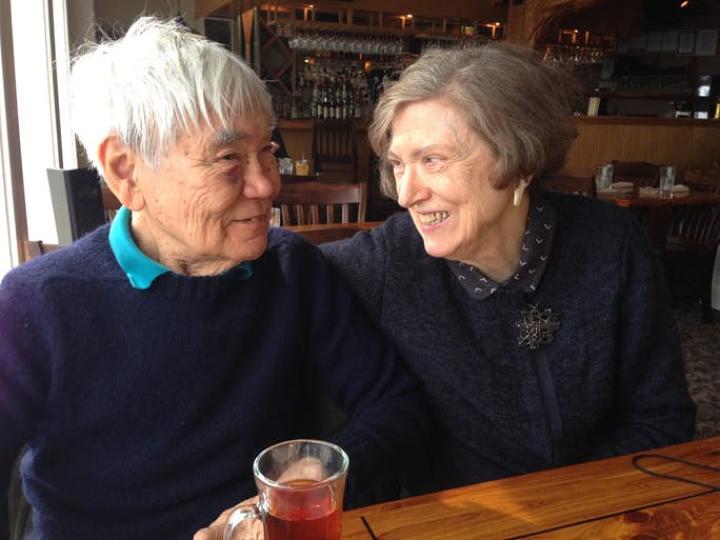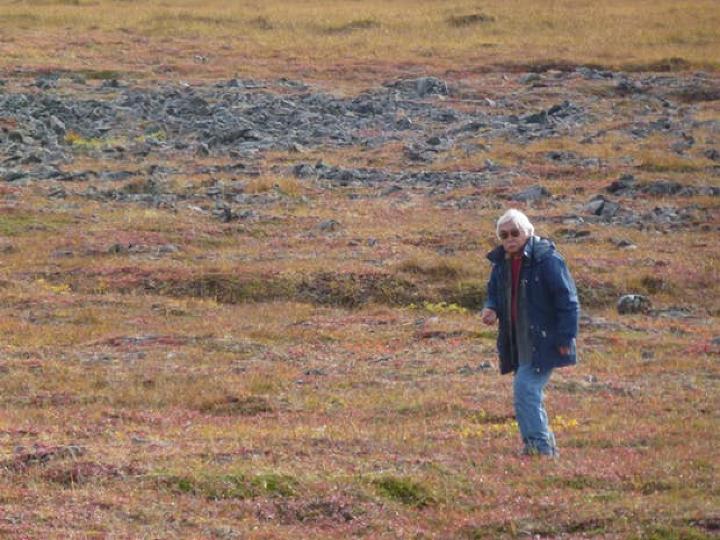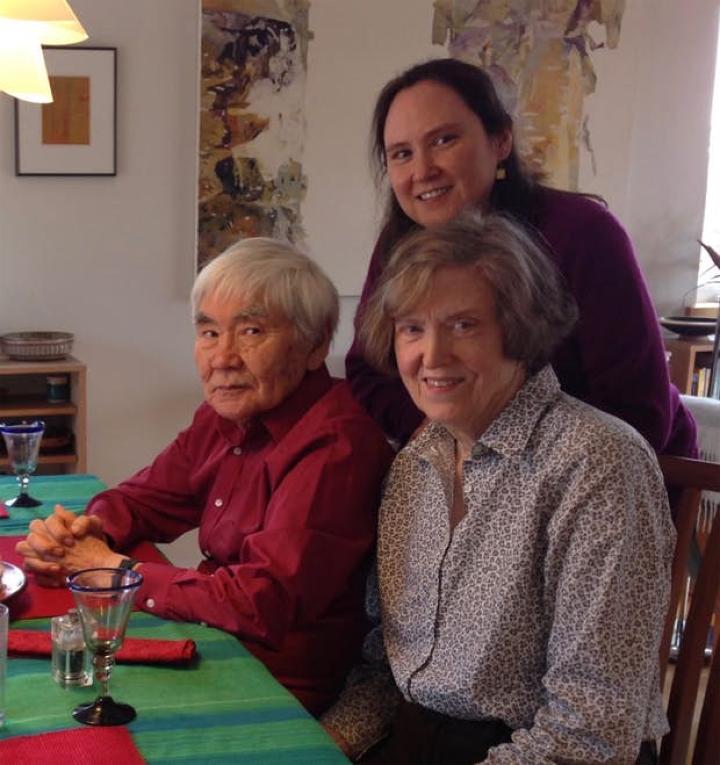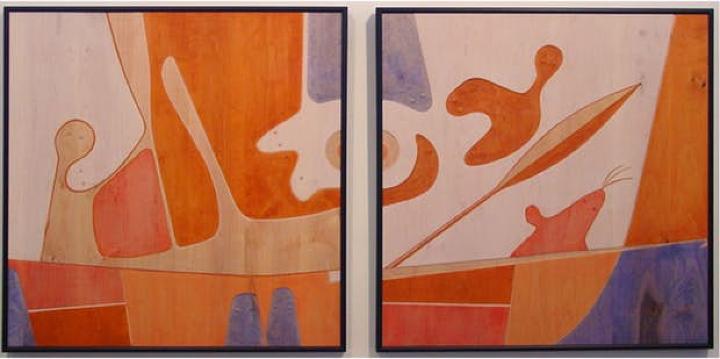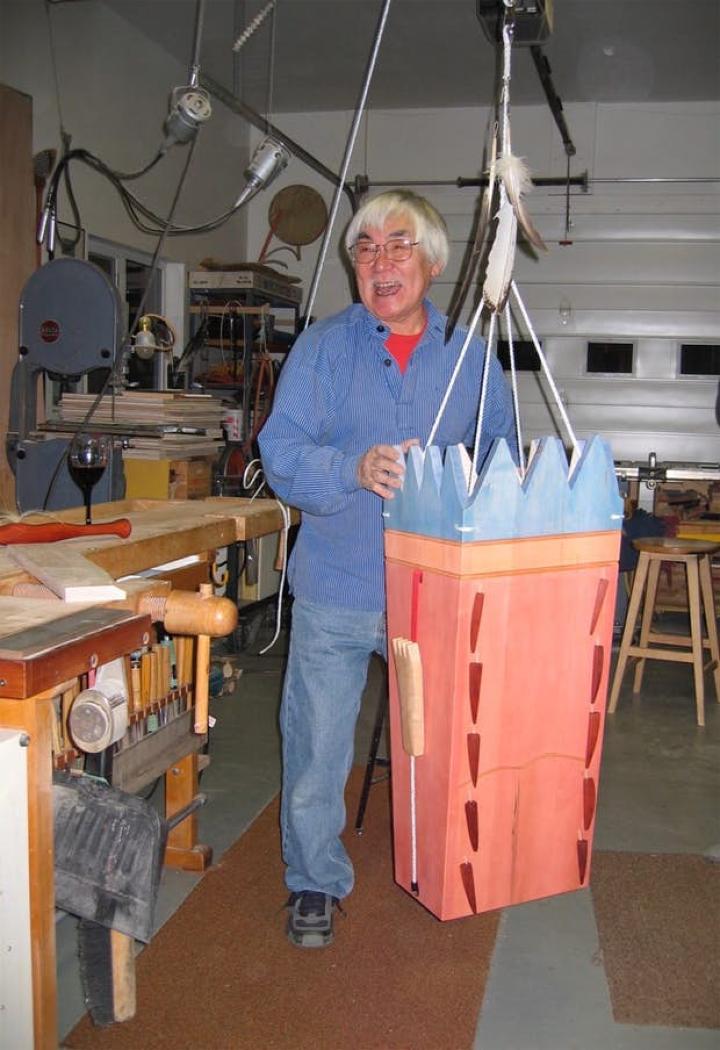 |
Canku Ota
|
 |
|
(Many Paths)
|
||
|
An Online Newsletter
Celebrating Native America
|
||
|
January 2020 - Volume
18 Number 1
|
||
|
|
||
|
Global artist Ron
Senungetuk, died at age 86
|
||
|
by Joaqlin Estus - Indian
Country Today
|
||
Correction: "He was able to change the course of Alaska art history single handedly" In an art student's 2006 Master's thesis, sculptor Abraham Anghik Ruben is quoted as saying, "[Ron] Senungetuk's timing was impeccable. He came at a time when Alaska Natives needed an infusion of culture and art to prepare for the changes that were coming," said Ron's former student. "He was able to change the course of Alaska art history single handedly, both Native and non-Native contemporary art." The quote appears in Charis Ann Gullickson's thesis for the University of Tromsø, Norway. Later in her paper, Gullickson said Ron's "pursuit to promote Alaska Native pre-contact art, by updating it into a contemporary artform, is a kind of political agenda. Essentially he is giving life to an art form that was devastated by colonialism."
Ron's friend and fellow artist Annette Bellamy, of Homer, Alaska, said Ron wanted to be known as an artist, and, "He was a wonderful, incredible artist." But she said he will also be remembered for having inspired and influenced countless students, "young artists that have moved on and are some of the most well known artists in Alaska now." Rebecca Lyon, an Athabascan and Alutiiq artist from Anchorage, said, "He was the godfather of Native art. I would never be where I am now without him," sad Lyon. "He helped others and brought them up with him."
Ron Senungetuk, Inupiaq, was born in 1933 in a sod hut and spent his early childhood in the tiny village of Wales, the westernmost community on mainland Alaska. His younger brother Joe Senungetuk, internationally renowned in his own right, said their training as artists started in childhood. He said, "Both Ron and I and my brothers were taught by our uncle [Andrew Seetook] to carve ivory in order to make a little spending money for ourselves at the village store in Wales."
For high school, Ron was sent to Mt. Edgecumbe High School in Southeast Alaska. In 1969, testifying about the experience at a U.S. House subcommittee hearing on land claims, Ron said, "At the time I left Wales, I was 15 years old. I spoke almost no English and I really went through cultural torment. For example I had to copy people eating in the airplane. I really did not know how to use forks and spoons," Ron said. "The plane that took me to the boarding school in Sitka left lasting impressions. It was a social shock but it probably taught me to be quite observant." Joe was seven years younger than Ron, so he was still a child when his teenage brother left home. "He would be apart for a good part of the year," Joe said. "So when they [the students] came back for the summer time they were more like strangers to me because they were away so much." But at Mt. Edgecumbe, Ron met the woodworker and designer he later called the greatest influence on his life. Art instructor George Federoff recognized Ron's talent working with wood and applied for a scholarship for him to attend the School for American Craftsmen at the Rochester Institute of Technology in Rochester, New York. There Ron came under the influence of two artists who worked in the Danish modern style and emphasized individual expression, as well as a firm grounding in technique and design. "He enjoyed learning. He enjoyed going to school. He got straight As all the time — he got really good grades and so was able to continue on with his Fulbright scholarship [after college]," Joe said. Ron won a one-year scholarship in 1961 to go to graduate school is Oslo, Norway, where he met his future wife, Turid, a silversmith.
Gullickson said Ron turned down a senior designer position at Steuben Glass in Corning, New York. Instead, he accepted a Carnegie grant to start an arts program at the University of Alaska Fairbanks. His work at the time appeared "very Scandinavian," Gullickson said. Ron said he "observed pretty poor conditions in Native art," most of which was churned out for the tourist market. He resolved to improve the quality and turned to his roots as an Inupiaq man from Wales. He studied the shapes and forms carved and painted on pre-contact objects from the Bering Sea region, and incorporated them into his work in wood, ivory, and metalsmithing.
Over the years, Ron drew on Inupiat, Scandinavian and other styles from around the world. Bellamy said as he discovered new artists in his travels, he used slides of their work in his classes. Ron encouraged Alaska Native artists to reject definitions others might present of who they were or what their work should look like, and to explore and express their individuality. He made it his life's work to mentor other artists. "According to my memories, he was always ready to teach somebody anything, whatever he knew," Joe said. In 1965, Ron founded and directed the University of Alaska Fairbanks Native Arts Center, the nation's first university Native art degree program. (The only other college-level U.S. Native arts education offered then was at the American Indian Arts Institute in Santa Fe, New Mexico). As director of the college's arts program from 1977 to 1986, he mentored generations of Native and non-Native artists.
Bellamy said Ron had a long bibliography of source materials about Alaska Native art that he had used in his classes and freely shared with others after his retirement from academia in 1986, "He just carried on to actually enrich, to broaden our knowledge of the incredible sophistication of Native culture, the richness of the cultures that were here before colonization, and of the intricacies that are lost between languages," Bellamy said. University of Alaska Fairbanks associate art professor Da-ka-xeen Mehner is the current director of the Native Art Center and chairman of the art department. He told the Fairbanks Daily News Miner, "Without his [Ron's] vision and the visionary idea of what indigenous arts in Alaska could look like, we wouldn't be here now," Mehner said. "It's his legacy. I feel like my role is as a caretaker of the Native Arts Center, and this is his legacy that's going on." Ron's artwork is on display in private collections, offices, museums and galleries throughout Alaska, the United States, and internationally. He has been recognized with numerous awards, including the Alaska Governor's Award for the Arts, Rasmuson Foundation's Distinguished Artist Award, and the Alaska State Council on the Arts Lifetime Achievement Award. He also was named professor emeritus of art at the University of Alaska Fairbanks. Ron Senungetuk is survived by his wife Turid and two adult children, Chris, a businessman and Heidi, a classical violinist and professor of ethnomusicology at University of Alaska Anchorage. Internationally renowned artist Ron Senungetuk, Inupiaq, passed away Jan. 21 in Homer, Alaska, after a long illness. He was 86.
Joaqlin Estus, Tlingit, is national correspondent for Indian Country Today and a long-time Alaska journalist. |
||||||||||||||
|
|
|
|
||
|
|
||
| Canku Ota is a free Newsletter celebrating Native America, its traditions and accomplishments . We do not provide subscriber or visitor names to anyone. Some articles presented in Canku Ota may contain copyright material. We have received appropriate permissions for republishing any articles. Material appearing here is distributed without profit or monetary gain to those who have expressed an interest. This is in accordance with Title 17 U.S.C. Section 107. | ||
|
Canku Ota is a copyright ©
2000 - 2020 of Vicki Williams Barry and Paul Barry.
|
||
 |
 |
|
|
The "Canku
Ota - A Newsletter Celebrating Native America" web site and
its design is the
|
||
|
Copyright ©
1999 - 2020 of Paul C. Barry.
|
||
|
All Rights Reserved.
|
||
